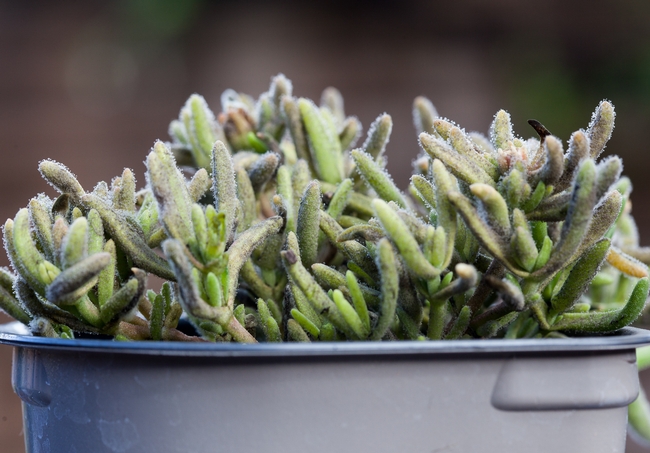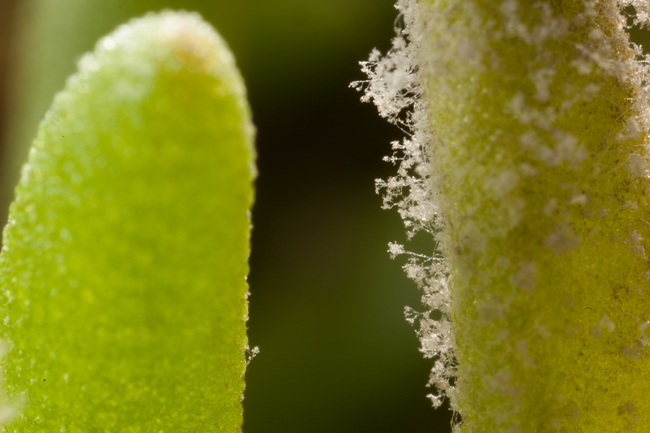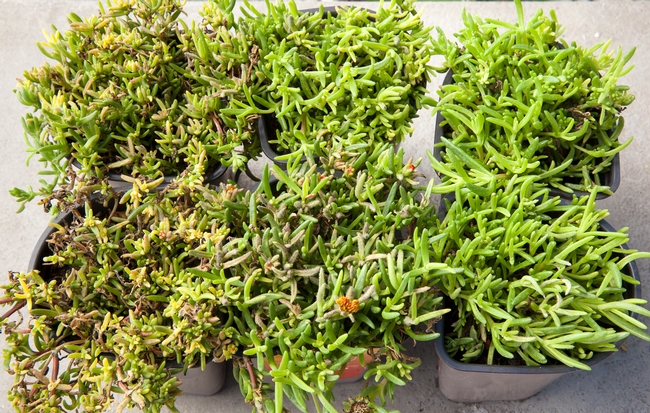Downy mildew diseases have become increasingly important and common on ornamental plants over the last decade in California. The wet and cool weather we recently have had should promote the development of this disease. Now through the spring is the time to take a close look at susceptible crops. One of the newest introductions of downy mildew in California is on iceplants, and this disease provides an excellent example to talk about downy mildew diseases in general.


In general, downy mildew diseases can be severe in cool or warm (but not hot) temperatures, high humidity, and when liquid water is present on plant tissue for extended periods. Link to information on leaf wetness importance. Downy mildew pathogens are part of a larger taxonomic group of fungi-like micro-organisms that contains Pythium and Phytophthora species. They primarily cause foliar blights and rapidly spread in young green leaf, twig, and fruit tissues. They produce spores on the ends of stalks and the spores can be carried by wind and rain to new infection sites of the same or different plant. The pathogen can be present in soil associated with host and non-host plants and therefore can spread by any means that aids in the movement of soil and/or water from infected plants to non-infected ones. The pathogen can spread through contaminated plant cuttings and transplants. Some are found in seed and can be spread through seed propagation.
Learn which crops that you grow are susceptible to downy mildew diseases, and monitor them closely now through the spring.
